Australian chefs feature at awards to celebrate Asia's 50 Best Restaurants
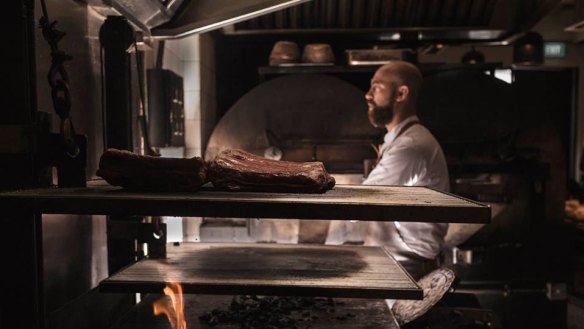
The sixth edition of Asia's 50 Best Restaurants crowned Gaggan for a record-breaking fourth win, but that wasn't the only news from the ceremony that was held in Macao for the first time.
Chef Gaggan Anand's playful, intensely personal cuisine at his eponymous restaurant Gaggan in Bangkok beat out his close friend and cooking buddy Zaiyu Hasegawa's Den in Tokyo for top honours at the Asia's 50 Best Restaurants 2018 awards ceremony. It was the fourth straight win at the annual awards for Gaggan's whirlwind culinary journey that defies everything from geography to technique, far removed from the restaurant's promise of "progressive Indian cuisine" on the sign outside.
"We have become a family, and that's the best thing that has happened in the last six years," said the chef as he accepted his award. While he did not refer to it specifically, he also made an allusion to his plans to close Gaggan in 2020, an announcement he first made more than two years ago. "We have young chefs taking over from the old ones," he added to thunderous applause. "So it is the time for us to leave and for you guys to take over." Anand himself already has several other pots bubbling away, like his soon-to-open tofu restaurant in Bangkok.
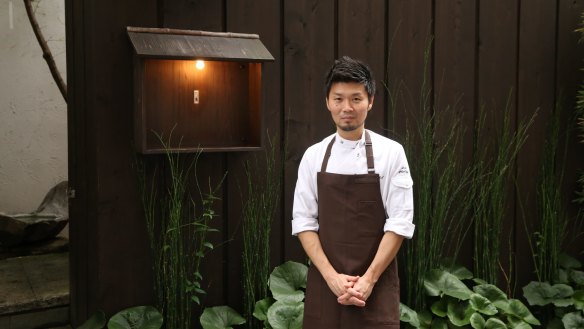
Ladies first
With the winner pretty much a foregone conclusion, there was plenty of time to focus on other chefs who made their mark on this year's proceedings. Asia's Best Female Chef Bee Satongun of Paste in Bangkok gave a shy wave, but declined to speak from the stage. In comments she made in private ahead of the ceremony however, she talked about the surprise of being given the title this year. "I really didn't expect this at all. When I got the phone call, I said 'Let me call you back'," she recounted with a laugh.
She accepted the following day, but she rejects the idea that she is a role model for other women or for Thai food. "I think a lot of people are looking at our restaurant [because of the prize] but I am not a role model. I never think of myself in that way. I still have to keep working." The meticulous re-interpretations of regional and historical recipes that she creates with husband Jason Bailey also won her restaurant the No. 31 slot in this year's rankings. She is the only woman to make the list.
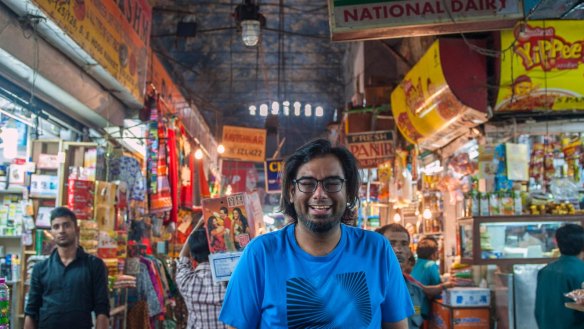
Cooking with a message
Lifetime Achievement recipient Andre Chiang may have just closed his famed Restaurant Andre (No. 2 in 2017), but that doesn't mean he isn't still present on the list. He is actively involved in Burnt Ends in Singapore and Raw in Taipei, both of which ranked this year. When he opened Restaurant Andre in 2010, "I didn't know that I'd have more than one restaurant in my career," he says. Now there are seven restaurants, and the list will grow to nine by the end of this year. The turning point was the realisation that he could do something to mentor and encourage other chefs. "There are so many great talents that you come across and they deserve to have their own restaurant and their own stage."
He credits his time in France with giving him the opportunity to understand the value of creativity. "I was allowed to see, allowed to cook, allowed to think," he says of his time beside culinary giants like Pierre Gagnaire, Joel Robuchon and the Pourcel brothers at Jardin des Sens in Montpellier where he was head chef. "In my mum's kitchen, no one ever asked me what I thought," he recalled. "It was 'just do this and shut up'."
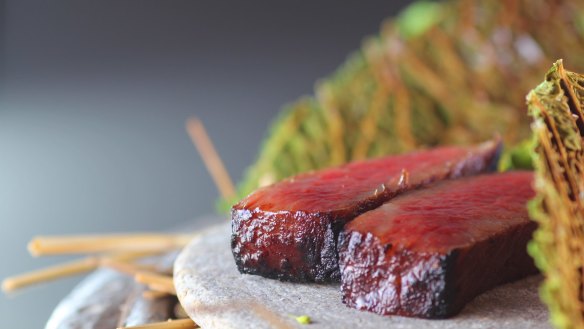
Allowing chefs to express themselves is only part of Chiang's mission. Encouraging sustainable practices and creating a demand for local ingredients and organically farmed produce is another. "We have a responsibility to the younger generation," both professionals and consumers. He hopes that one day he'll have a school, "to teach everything that is not taught in cooking schools today: creativity, colour, identity, seasonality. You need to understand these commonsense things to become a complete chef, not just skill."
That's a message he shares with chef Shinobu Namae, who won the Sustainable Restaurant Award for L'effervescence in Tokyo. "Keeping our traditional culture and our local, regional ingredients alive in a way so it doesn't harm nature and the Earth," is what he practices in the kitchen every day. "[Even though] culture is changing, we need to harmonise to find the best balance," says Namae. He credits his experience with Michel Bras, for whom he worked in Hokkaido for five years, for putting these principles into practice. "I went foraging every morning before going to the kitchen, so I know wild plants and vegetables," he remembers, principles that he also applies in L'effervescence's more urban setting.
Masters of their craft
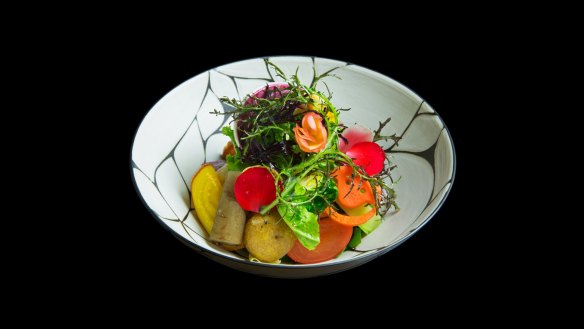
Indian Accent (based in New Delhi) chef Manish Mehrotra is an old hand at Asia's 50 Best Restaurants, having made the list every year since its creation in 2013. "It feels great, it really encourages you," he says. "You get to be on a world stage." And being on that stage allows him to promote a better understanding of his country's multi-faceted cuisine. "There are so many myths about Indian food outside of India. That Indians only eat curry, that all Indians are vegetarian, and that's not true." According to Mehrotra, one of the ways he and other chefs are getting that message out is by appropriating traditional recipes. "Chefs are going deep into history, taking dishes and giving a little bit of their own twist," like his own dal moradabadi, traditionally bland invalid food that he gives new life by tempering lentils of different textures and layering if with aromatics.
The only local on the list, chef Tam Kwok Fung of Macau's elegant Jade Dragon, also transforms classics with painstaking attention to detail. All the meats from Iberico pork to carefully sourced geese are roasted in-house over fragrant lychee wood. Kagani crab makes an appearance in a silky hot and sour soup and in steamed dumplings. Homemade noodles are tossed with chicken and spring onions for a deceptively simple final savoury.
The new generation
Asia's best pastry chef Nicolas Lambert from Caprice in Hong Kong was elated by his win, that he only learned of on the night. "I'm going to go to bed with this," exclaimed the 29-year old, clutching the plexiglass trophy after the ceremony. The next day, during a quieter conversation, he reflected on why he won the prize. "I didn't come to Asia as a Frenchman serving French pastries like in France. I really adapted to local tastes, making things much less sweet than I had in recent years, really reducing tangy tastes, even if I like those flavours myself." As a pastry chef, he also had to work on the presentation of his plated desserts. "Here, taking pictures of every dish is really part of the culture. We're super busy and have 140 diners a day, all of whom are taking pictures. I can't screw it up," he says candidly.
Eventually, he'd like to travel more and grow professionally. "I feel good in Hong Kong," he says. "But at Caprice I do only plated desserts. I need to do many more things, with more responsibility. I'd really need to find some place where the focus is on pastries," from viennoiseries to afternoon teas.
Another young Hong Kong-based chef to win praise and a first entry at No. 40 is Daniel Calvert. His previous credits include The Ivy, and Pied a Terre in London, Per Se in New York where he was the youngest sous-chef and the century-old Bristol in Paris. At the head of Hong Kong's classically French Belon for two years, he applies the technical rigour he learned in his previous houses while letting his personality shine in pairings such as foie gras in salted sakura leaf with pickled cherries. "I'm just trying to do what the old generation did, but better!" says Calvert.
Chef Jordy Navarra was singled out for the One to Watch prize, highlighting the work of an up-and-coming Filipino chef. "It's a nice feeling knowing we're on the right track," he says about the food he serves at Toyo Eatery in Manila, where he reimagines dishes inspired by forgotten produce and regional recipes. He talked about how traditional foods were often supplanted by processed food and fast food. "My grandmother would go to the market and cook whatever was fresh and cook it for lunch and dinner. And then special days they would get Spam because it was different, like a treat."
So reconnecting with people and their own food culture is a big part of championing Filipino food. "It's about convincing other Filipinos that what we have is interesting what we have is something that should be shared." When he asks about local specialities, he often hears, "'That's just for every day, and is our every day good enough?'" The answer is a resounding yes.
Finally, one more young chef who sees a responsibility to his national cuisine is Ton Tassanakajohn of Bangkok's Le Du, who rose a spectacular 23 places in this year's list, arriving at No. 14. "I look up to the Bangkok pioneers who made the Bangkok food scene what it is today," referring to several of the chefs on this list. "And I still have a long way to go to learn and cook." But he is conscious that with the attention comes a responsibility "to take Thai cuisine, the cuisine of my motherland, further on the world stage to places it has never been".
Oz in Asia
The ties between Asia and Australia were once again apparent at this year's ceremony. Despite the official announcement of his departure from Nahm to pursue projects as varied as cooking on a gourmet cruise and making a huge splash with a new flagship restaurant in the tallest building in Bangkok with former Nahm head chef Prin Polsuk, the picture of David Thompson, Australia's ambassador of Thai cuisine to the world, went up when the restaurant's No. 10 position was announced. The chef himself however, who was working on yet another project in Korea, was conspicuous by his absence.
Chefs Dave Pynt and Jake Kellie of Singapore's favourite barbecue Burnt Ends at No. 12 are from Perth and the Central Coast of NSW respectively; Albury NSW-native Kai Ward met Richie Lin, two-thirds of Mume in Taipei, when they were cooking together at Quay in Sydney; owner Danny Yip of The Chairman in Hong Kong (22) got his start in the business when he opened Window on the Orient in Canberra in the 1980s; Tetsuya Wakuda, long a fixture on the Sydney dining scene, makes the list with his refined Singapore restaurant Waku Ghin at No. 23; Jason Bailey, half the team behind Paste in Bangkok (31), is from the Southern Highlands; Dylan Jones , the "lan" in Bangkok's Bo.lan (37), is from Canberra; and Queensland-native and another Quay alum Sam Aisbett of mod-Oz Whitegrass in Singapore rounds off the list at No. 50.
Restaurant reviews, news and the hottest openings served to your inbox.
Sign up